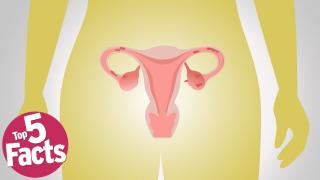Top 5 Need to Know Facts About Ovarian Cancer

Ovarian cancer is one of the most subtle cancers to detect. These are the need to know facts about the silent killer. Treats are evolving, while most cancers are treated with surgery followed by chemotherapy and radiation treatment, technology is evolving every day to include new and innovative options for victims of the disease. The Symptoms can be hard to notice. Unlike some other cancers, the symptoms for ovarian cancer can be vague and difficult to detect. One common misconception is that your annual gynecological exam or PAP smear will detect ovarian cancer. This is NOT the case. Like any disease, Diagnosis at an early stage improves the chance of survival so Keeping track of even mild symptoms and informing your doctor of them is key in reducing your risks.
#5: Treatments Are Evolving
While most cancers are treated with surgery followed by chemotherapy and radiation treatment, technology is evolving every day to include new and innovative options for victims of the disease. Immunotherapy is one field in which advances are being made for ovarian cancer patients, along with DNA repair drugs. One option that is drastic but has proven to be successful is the removal of the ovaries and fallopian tubes in at-risk women. Actress Angelina Jolie elected to have this surgery after receiving some blood tests that showed elevated risk for ovarian cancer, which her mother died of in 2007.
#4: The Symptoms Can Be Hard to Notice
Top 5 Need to Know Facts About Hyperemesis Gravidarum
Unlike some other cancers, the symptoms for ovarian cancer can be vague and difficult to detect. One common misconception is that your annual gynecological exam or PAP smear will detect ovarian cancer. This is NOT the case. A PAP smear screens for cervical cancer, but rarely detect abnormalities in the ovaries. The most frequently occurring symptoms of ovarian cancer are abdominal bloating, frequent urination, weight loss and pelvic discomfort. Because none of these symptoms seems severe, it can take people a long time to visit their doctors and receive a diagnosis.
#3: All Women Are at Risk for Ovarian Cancer
Top 5 Need to Know Facts about Endometriosis
Ovarian cancer may not be as common as other women’s cancers, like breast cancer, but it still affects millions of women worldwide. Every year, approximately 250 thousand women are newly diagnosed. One of the most important things to be mindful of when it comes to prevention is your family history. Women who have a close family member who has suffered from ovarian cancer or even breast, colon, uterine or rectal cancer have a higher risk than the general population. If that’s the case, genetic testing is recommended.
#2: Some Things Can Lower Your Risk
Top 10 Gross Things Your Body Produces
While the disease may seem like a scary one, there are ways to take your health into your own hands in order to improve preventative measures. Leading a healthy lifestyle with a balanced diet and exercise regime is beneficial in the prevention of all illnesses, but there are more specific ways to reduce your risk of ovarian cancer. For example, use of oral contraceptives reduces risk in women as does having a full term pregnancy before the age of 30. If you’re already at risk, a tubal ligation surgery or ovary removal surgery can significantly increase your odds of avoiding the disease.
#1: Diagnosis at an Early Stage Improves the Chance of Survival
As with many other cancers, an early diagnosis of ovarian cancer vastly improves a patient’s chance of survival. The problem is, because of the vague and mild symptoms we mentioned earlier, most people are not diagnosed until it has already reached a more critical stage. This typically occurs when the cancer has already spread beyond the ovaries. Ovarian cancer only accounts for an estimated 1.3 percent of new cancer cases in the U.S. each year, but it accounts for more deaths than any other female reproductive cancer. Keeping track of even mild symptoms and informing your doctor of them is key in reducing your risks.




